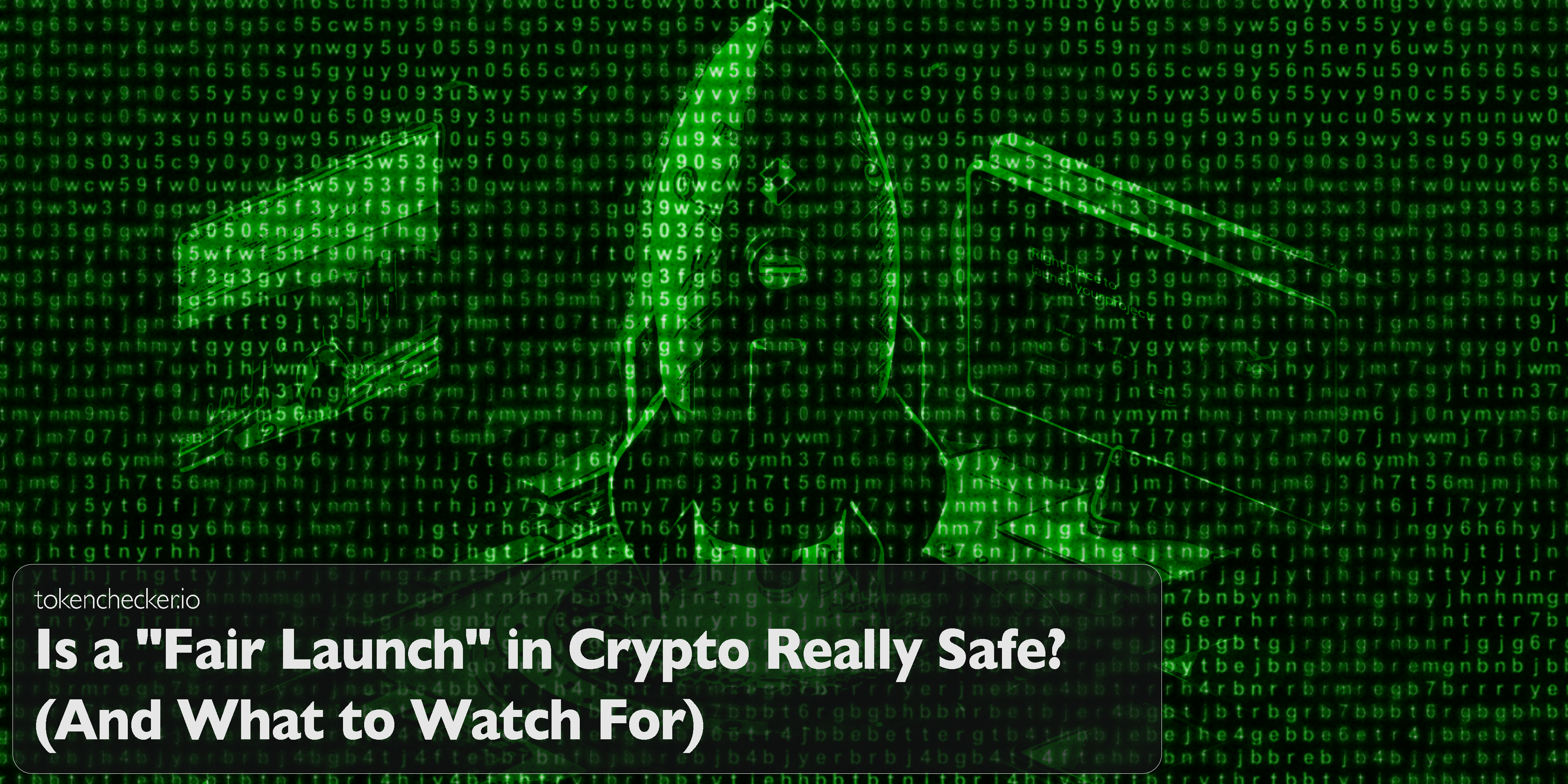
Is a "Fair Launch" in Crypto Really Safe? (And What to Watch For)
Introduction
Fair launches sound perfect. No pre-mined tokens. No insider allocations. Everyone starts on equal footing. It’s crypto at its most democratic and most idealistic. But does "fair" mean safe?
Not always. While the idea is noble, the execution isn’t bulletproof. In fact, some of the biggest rug pulls and scams in DeFi started from what looked like fair launches.
So let’s break it down: what a fair launch really means, why it’s not a security blanket, and how you can tell when the fairness is just for show.
What Is a Fair Launch?
In theory, a fair launch is when a crypto project launches its token with no pre-sale, no early access, and no special deals for insiders. Everyone can buy in at the same time often through mining, farming, or an open market listing. There’s no private investor round, no seed token allocations, and no discounted sales.
The appeal is obvious: no hidden whales, no VC strings, and no backroom deals. Just a flat playing field.
Bitcoin is the original fair launch. So is Monero. Yearn Finance (YFI) also famously launched with no tokens reserved for the team users earned them by providing liquidity.
But here’s the catch: a fair start doesn’t mean a fair outcome.
The Hidden Risks of Fair Launches
1. No Upfront Funding = Slow or Abandoned Projects
Without a pre-sale or VC round, fair launch projects often start with no money. That sounds noble, but it creates a huge problem: how do they fund development, audits, marketing, or even keep the lights on?
Many fair launch tokens flame out fast. The devs realize they can’t sustain the project, or they quietly abandon it once the hype fades. That “fair” beginning becomes a ghost town.
2. Anyone Can Still Accumulate and Dump
Even with a fair launch, there’s nothing stopping early users or bots from buying massive amounts of tokens and becoming whales. Some projects try to counter this with anti-whale mechanics, but most don’t.
So while the launch might be fair, the distribution quickly becomes centralized again. And those big holders? They can tank the price with a single sell.
3. Scammers Use the Label to Create Trust
Fair launch sounds safe. Scammers know this. That’s why many honeypot tokens, pump-and-dumps, and soft rugpulls call themselves “fair launches.”
They’ll skip pre-mines but still hide dangerous functions in the smart contract. Or fake their team. Or copy a popular project’s branding.
It’s marketing. Not a guarantee.
4. Launchpads Make It Too Easy
Fair launches used to require effort. Now, platforms like Uniswap or pump.fun let anyone launch a token in minutes.
That’s great for accessibility but also great for scammers. A malicious contract can go live fast, build fake hype, and rugpull just as quickly.
tokenchecker.io’s honeypot scanner and liquidity lock analysis can catch most of these before they trap anyone.
5. Regulatory Loopholes = Fewer Protections
Because there’s no pre-sale or fundraising, fair launches sometimes fly under regulatory radars. That might sound like freedom but it also means less oversight.
If the devs vanish or the contract gets exploited, you’re not getting your money back. There’s no team to sue, no company to report. It’s just you and your tokens.
What to Look For in a Real Fair Launch
Not all fair launches are traps. Some are legit. But you’ve got to dig deeper than the label. Here's how:
- Check the Contract: Is the code verified? Are functions like mint() or disableTrading() still active?
- Scan with tokenchecker.io: Use it to simulate trades, test sellability, analyze tax functions, and check for hidden wallet control.
- Look at Distribution: Are there a few wallets holding the majority of tokens?
- Team Transparency: Is the team public? Do they engage consistently? Or is it all hype and no substance?
- Audit History: Have they been audited by a reputable firm? Not just a badge show the report.
- Community Health: Is it real users or just bots and shillers? Are people asking smart questions or just chanting "WAGMI"?
Final Thoughts
Fair launches are a beautiful idea. They level the starting line. But they don’t guarantee a fair race.
Some of crypto’s best projects started this way. But so did some of the worst scams. The difference is in what happens after launch—how the code is written, how the liquidity is managed, and how the team (if any) behaves.
If you’re going to invest in a fair launch token, treat it like any other high-risk venture. Do your homework. Ask hard questions. Use tools like tokenchecker.io to look under the hood.
Because "no presale" doesn’t mean "no danger."